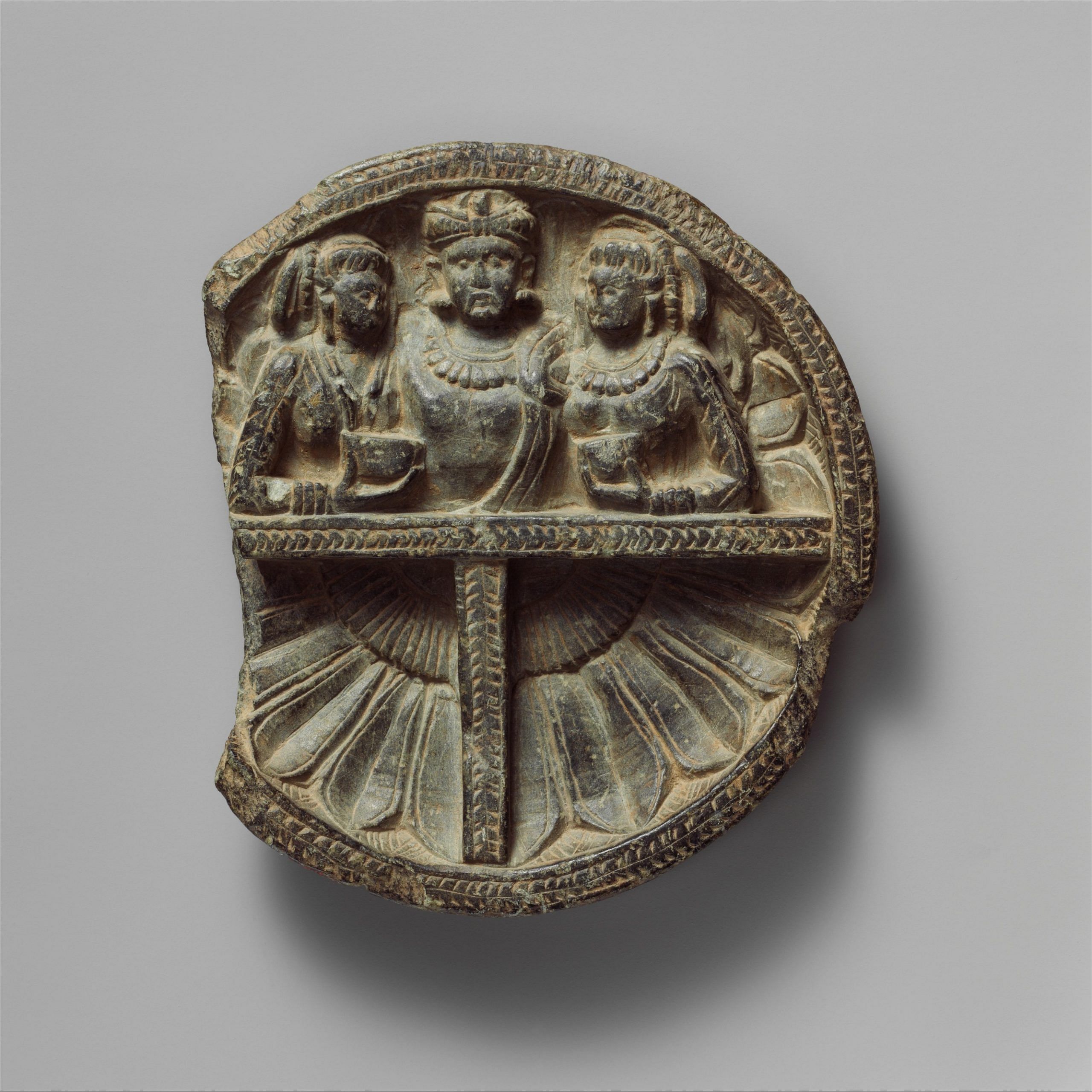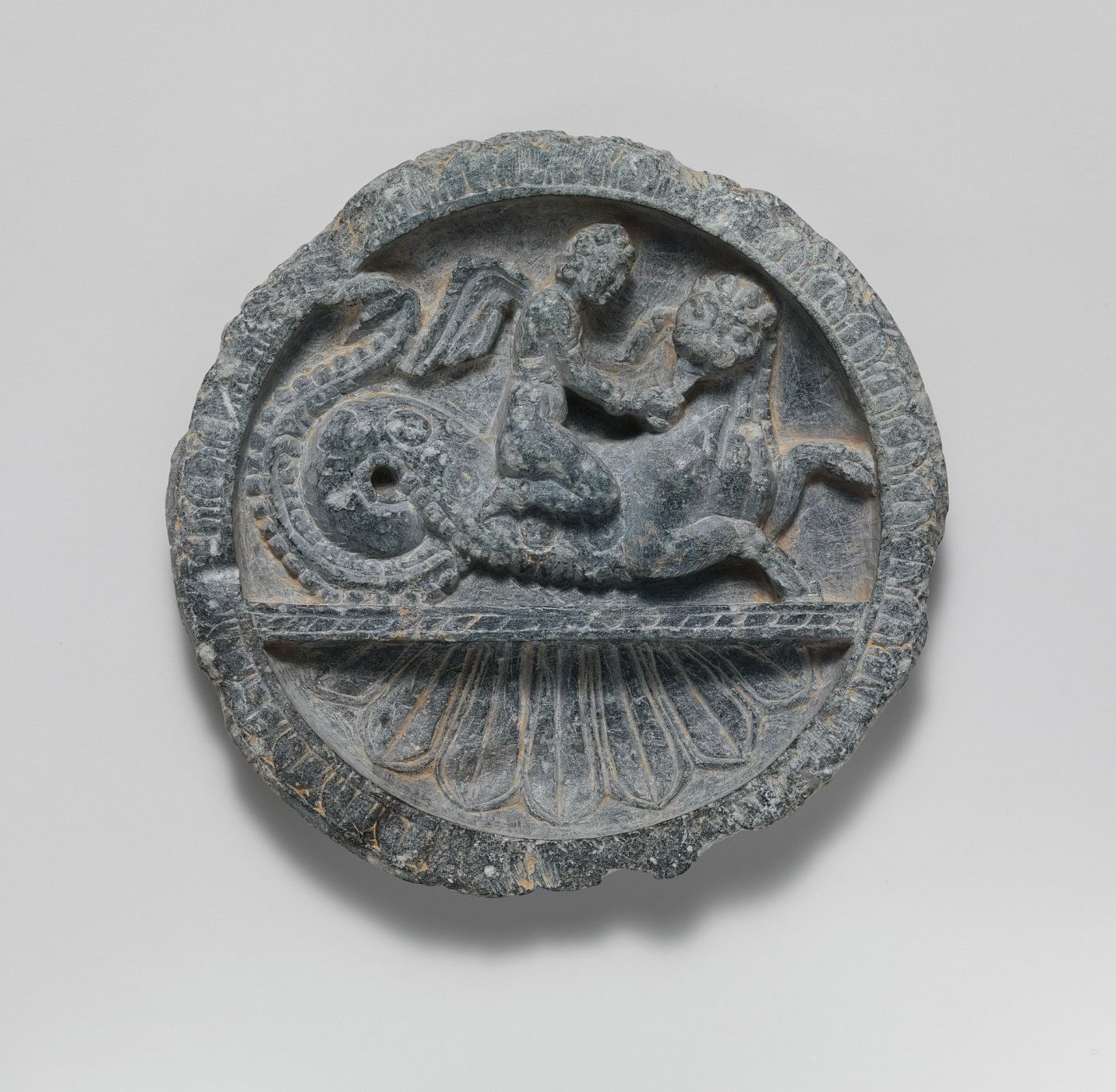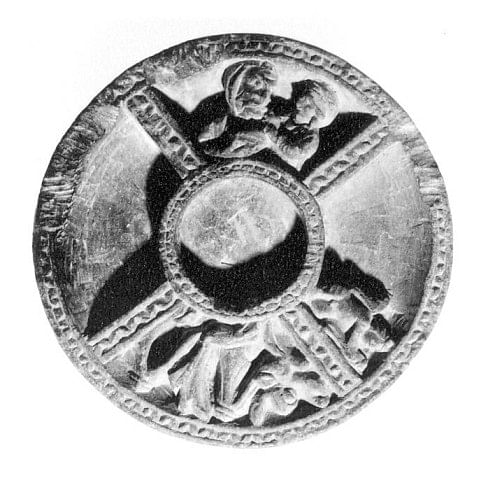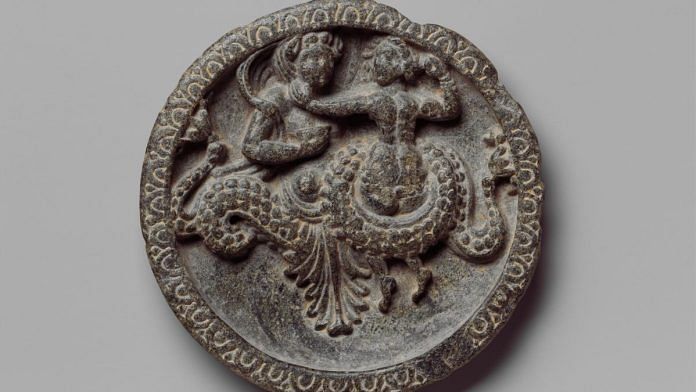Among the earliest functional objects found in the Gandhara region of present-day Pakistan and Afghanistan are small carved stone dishes dated to the period between the late second century BCE and the first century CE. Usually made of schist, steatite or phyllite, these plates and shallow bowls are typically between 10 and 15 centimetres in diameter and between a few millimetres and 3 centimetres high. Often divided into two or more sections, the interior of each dish shows a scene carved in intricate relief, with decorative patterns etched along the rim and on the underside. The style and iconography of these images demonstrate the exchanges between Hellenistic, Parthian and Shaka artistic traditions that formed the basis of later Gandharan sculpture.
First discovered at the archaeological site of Sirkap near Taxila in the early twentieth century, the stone dishes feature standalone scenes populated by a variety of subjects. Commonly seen are drinking scenes, showing men and women holding wine cups or inebriated people being supported by attendants, as well as mythological creatures and guardian couples depicted as versions of Indic, Greek and West Asian deities.
One such artefact held in the collection of the Metropolitan Museum of Art, New York shows an inebriated woman being supported by a man, both wearing wreaths and drapes rendered in a style that suggests the Greek god Apollo and his consort, Daphne. On another dish featuring the couple, Apollo is shown wearing a pointed hat typically worn in the Parthian world. Other dishes depict lotus petals in the interior, a distinctively Indic motif.

Also read: The Chandayana – an epic Awadhi love story with many illustrated adaptations
As with most Gandharan art, there is some ambiguity around the degree of Graeco-Roman influence on these images. While some scholars consider the scenes to be an aspect of the cult of Dionysus — and thus a product of Hellenistic influence on Gandharan art — others highlight a more indigenous source for the images in the ancient cults of yakshas and yakshis. These spirit figures were considered custodians of amrita, the elixir of eternal life often held in chalices, and were ritually offered meat and alcohol. However, as evident through the mixed iconography of Apollo and the recurrence of Indic floral motifs, the carvers of these images drew on multiple sources and re-interpreted them in a unique visual language, which would have been intelligible to the cosmopolitan audience of ancient Gandhara.

While their distinctive style, antiquity and presence in museum collections make them valuable objects of art in the contemporary world, there has been speculation and debate regarding the original function of the stone dishes. The minimal wear on the dishes as well as their iconography suggest that they were made for ritual rather than utilitarian or ornamental purposes.
The division of the dishes into internal sections points to their use for libations and other offerings. However, unlike other Gandharan sculptures, the artefacts have been found in the remains of houses and not of sacred structures, which might indicate that they were used for rituals practised within the domestic context. In all probability, the plates were likely considered luxury goods at the time, partly because of their highly skilled craftsmanship and given their predominant emergence from important urban centres. Speculations about the social structure of Gandharan society also suggest that the Dionysian cult, whose iconography is frequently seen on the plates, was limited to the elite class.

Although largely accepted as ritual objects today, they were initially thought of as ‘toilet trays’ or cosmetic containers based on an interpretation of a relief sculpture from Butkara (in present-day Swat, Pakistan) showing a woman applying makeup from a circular dish. By the 2000s however, this theory was abandoned as none of the artefacts showed traces of the cosmetic pigments or pastes that were found in other containers at excavation sites in Gandhara. The specifics of the dishes’ ritual use, however, have not been conclusively resolved, and it has been suggested that the plates may have been used for Buddhist funerary rituals rather than Dionysian ceremonies.
Today the dishes are part of collections across the world, the largest being housed in The Metropolitan Museum of Art in New York.
This article is taken from the MAP Academy‘s Encyclopedia of Art with permission.
The MAP Academy is a non-profit, open-access educational platform committed to building equitable resources for the study of art histories from South Asia. Through its freely available digital offerings—Encyclopedia of Art, Online Courses, and Stories—it encourages knowledge-building and engagement with the visual arts of the region.



